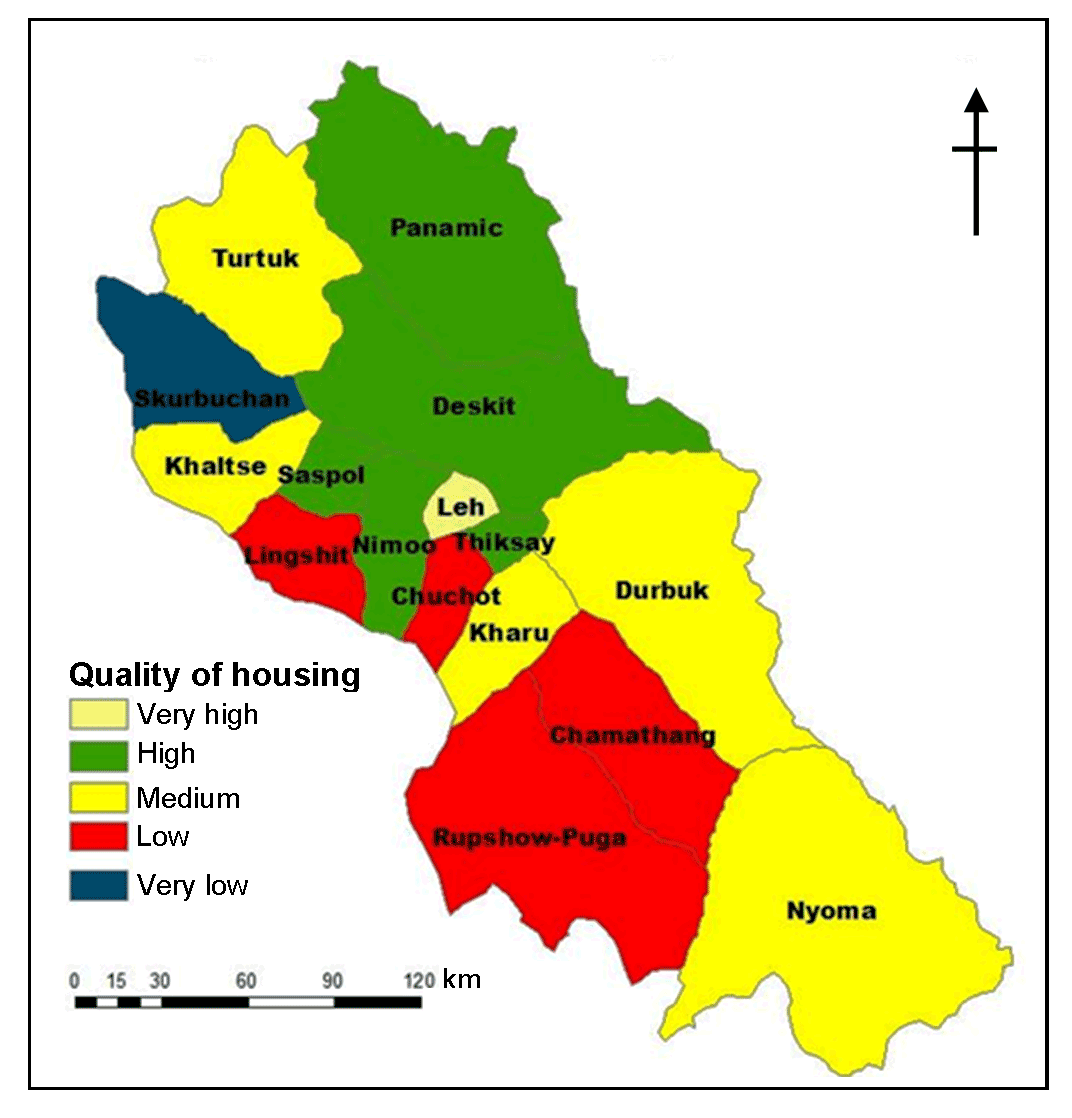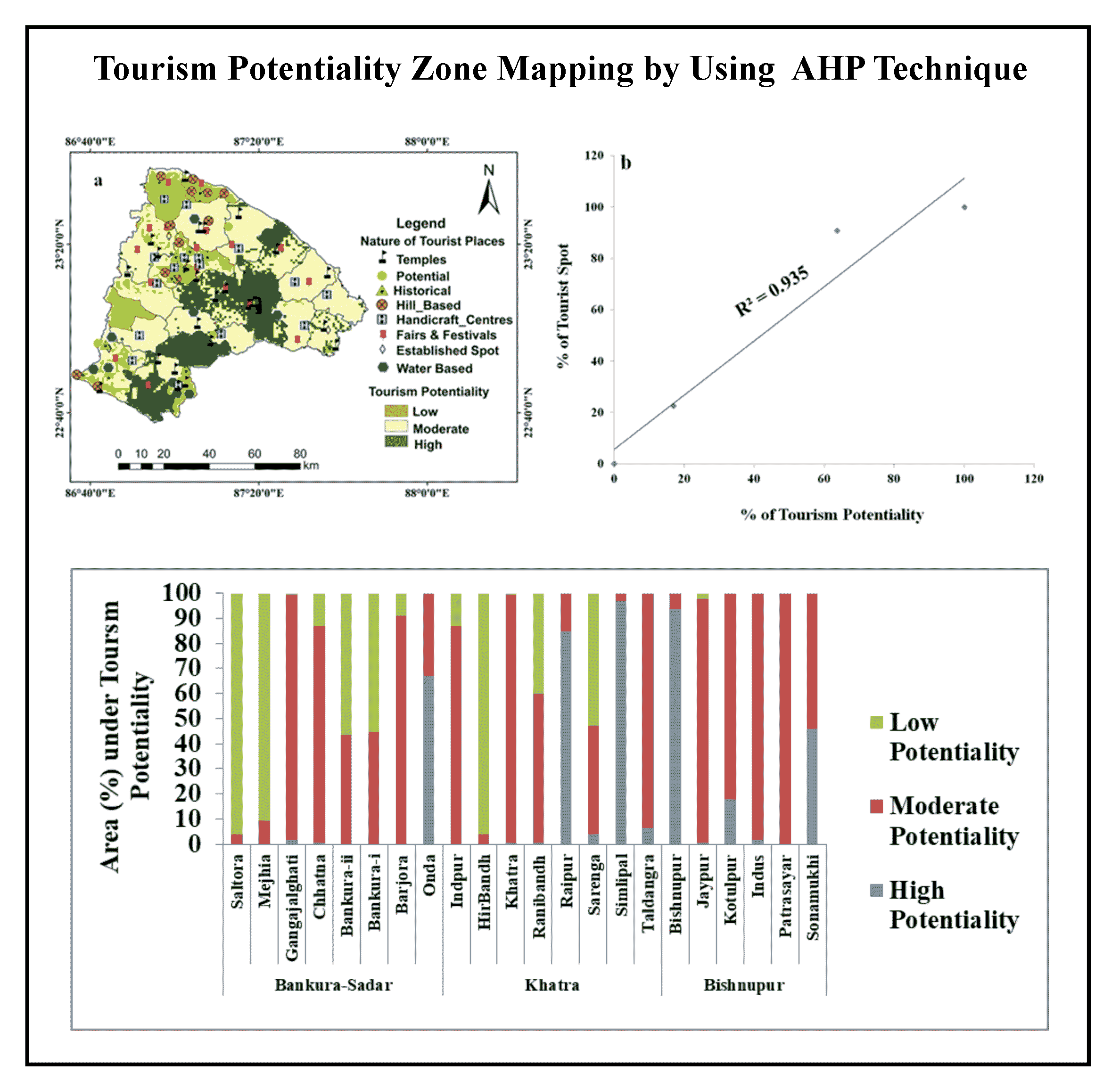Article Title :
Quality of Housing in Native Ethnic Tribes of Cold Desert Leh-Ladakh 
6 (2022)
33-39
Variables , Ladakh , Housing , Ethnic Tribes , cold desert


The present study was carried out to assess the quality of housing of native ethnic tribes of cold desert, Leh-Ladakh. These ethnic tribes being the inhabitants of remote areas of cold desert are lacking behind in almost all the basic facilities. The study reveals that 40% of households were having Kacha houses. Most of the houses (55.77%) had two rooms for human use. Nearly, 23.10% households were having the size of the rooms as less than 100 ft2. The average number of persons sharing each room was less than the recommended standard. About 85.44% households have improper ventilation and 38.59% households have traditional/pit latrines and even 63.35% of households were having pit latrines inside the house. About 49.27% of households have a cowshed located inside the courtyard. Majority of households (96.36) were not satisfied with their housing conditions. Very high quality of housing has been reported in the urban area. Both high and medium quality of housing has been noted in five blocks each, and low/very low quality of housing has been reported also in five blocks. The improvement in housing will lead to better health conditions and overall quality of life.

The study was focused on quality analysis of housing of native ethnic tribes of cold desert, Leh-Ladakh.
About 40% of households were having Kacha houses with (55.77%) houses of two rooms.
Nearly, 23.10% households were having the size of the rooms as less than 100 sq. ft2.
Majority of households (96.36) were not satisfied with their housing conditions.
Aderamo, A. and Ayobolu, D., 2010. Spatial Structure of Housing Quality in Nigeria. Research Journal of Social Sciences, 1(5), 12-27.
Baba, S., 2015. Residential environment and related health problems in Srinagar city, Jammu and Kashmir, Doctoral dissertation, Aligarh Muslim University.
Deheragoda, K., 2004. Housing as a fundamental right and sector policy. Housing: Policy Issues and Challenges-Economic Review, Colombo: The People’s Bank Discussion Paper FSIII 01-401, Berlin: Science Centre.
Dewan, P., 2004. Jammu, Kashmir and Ladakh, Manas Publications, New Delhi. Economic Research Discussion, 38.
Eja, 2011. A comparative analysis of residential housing quality and waste management in Ikom Local government area. British Journal of Humanities and Social Sciences, 1(2), 61-71.
Gilg, A., 1985. An Introduction to Rural Geography, Adward Arnold Publications, 61.
Hamdi, N., 1991. Housing without houses: Participation, flexibility, enablement (Book Review). Third World Planning Review, 13(3), 309.
Hussain, M., 1984. Geography of Jammu and Kashmir State, Rajesh Publishers, New Delhi, 34.
Kulkarni, K. M., 1998. Geography of Crowding and Human Response- A Study of Ahmadabad City, Concept publishing company, New Delhi, 74.
Lukeman, Y., Bako, A.I, Omole, F. K., Nwokoro, I. I.C. and Alakinde, M. K., 2014. Environmental health conditions of Slum dwellers of Ijora-Badia of Lagos state, Nigeria, Academic J. of Interdisciplinary Studies, 3(4), 79- 88.
Park, K., 2015. Preventive and Social Medicine, Anmol publications, 559-563.
Rahman, A., 1998. Household Environment and Health, B R publication, New Delhi, 119.
Rather, G. M, Dar, R. A., and Bhat, M. S., 2017. Residential environment and related health problems in cold desert Ladakh. Geographical Review, 1(5), 42-57.
Sagwal, S., 1991. Ladakh-Ecology and Environment, Ashish Publishing House, New Delhi, 9-21.
Smith, D. M., 1966. Human Geography- A Welfare Approach, Edward Arnold Publishers ltd, London, 31-39.





